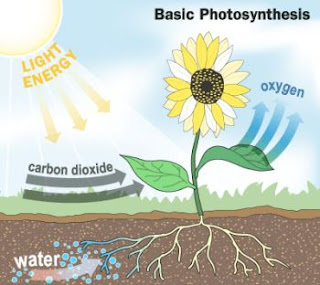| Basic Competence for SMA: | Working with procedural texts and monolog:
|
| Basic Competence for SMK: | 3.4 Understanding and retelling manuals (procedural texts). |
A. What is a procedural text?
A procedural text is a text which is intended to tell the reader how to do, operate, or make something. The information in a procedural text is usually written in the present tense and is arranged in a logical sequence of events which is broken up into several sequenced steps.Based on its purpose, a procedural text may explain how things work or how to operate things (how to use the scanner, the computer, the camera, etc.), give instrucions on how to do an activity (cooking recipes, rules for games, science experiments, road safety rules, etc), or give advice concerning human behavior (how to be a good secretary, how to live healthily, etc).
B. What is the format of a procedural text?
- Recipes usually consist of two groups of information; ingredients and method.
- Game instructions usually include how to play, game rules, scoring method, and the number of players.
- Scientific experiments usually include the purpose of the experiment, equipment, procedure, observations and conclusion.
C. How to Write a Procedural Text
- State your goals clearly at the beginning.
- List all materials and equipment in order of use.
- List the steps in chronological order.
- Focus on general people by using subject "You" or "We" instead of individuals.
- Use action verbs (imperative verbs), such as cut, peel, plug, turn on, etc.
- Use sequencing words to connect the steps. E.g.: First(ly), second(ly), third(ly), next, then, etc.
- Give detailed information on how (carefully, with the knife); where (into the oven); when (after the water boils).
- Give detailed factual description (shape, size, color, amount).
D. Example of a procedural text
How to Cook Noodles
Many people like noodles for their daily meals. Its delicious taste and simple preparation have made noodles very popular especially in some Asian countries. Here is a recipe to cook noodles.Ingredients:
- Noodles
- Water
- Salt to taste
- Stock cube
- Noodle packet
- Vegetables
- Flavoring powder
- Seasoning sauce
- Spices
- Water
Things you need:
- Cooking pan
- Strainer
- Serving plates
Steps:
- Boil the water in a cooking pan.
- Add the stock cube or salt if desired. Make sure the stock cube is completely dissolved before adding the noodles.
- Add the noodles and turn the heat to low or off. This is different for different kinds of noodles. Some just need to be soaked, others require simmering. Check the package of the noodles to be sure.
- Let the noodles simmer or soak for the required number of minutes. This varies too. Follow directions on the package.
- Drain off the fluids in a strainer. The noodles are ready for further preparation.
Tips:
- The flavor of the stock depends on the ingredients you wish to add later. Choose chicken if you want to add chicken, beef if you want to add meat etc.
- Save the stock for soups and sauces by draining it into a pan.
- Take care to add the right quantity of water.
- Let the noodles soak the water for some time after they have been cooked.
- English Online. Instruction. http://englishonline.tki.org.nz/English-Online/Teacher-needs/Reviewed-resources/Reading/Features-of-text-forms/Instructions. Accessed Nov 6, 2011.
- Wikihow. How To Cook Noodles. http://www.wikihow.com/Cook-Noodles. Accessed Nov 12, 2011.

















